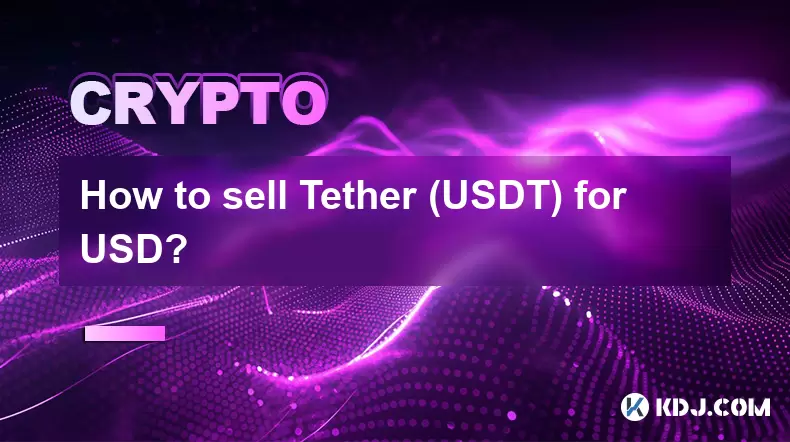-
 Bitcoin
Bitcoin $115100
1.27% -
 Ethereum
Ethereum $3675
2.71% -
 XRP
XRP $2.995
1.45% -
 Tether USDt
Tether USDt $1.000
0.02% -
 BNB
BNB $769.8
2.64% -
 Solana
Solana $168.0
3.25% -
 USDC
USDC $0.9999
-0.01% -
 TRON
TRON $0.3371
1.48% -
 Dogecoin
Dogecoin $0.2051
3.36% -
 Cardano
Cardano $0.7394
2.30% -
 Hyperliquid
Hyperliquid $38.15
0.42% -
 Stellar
Stellar $0.3966
-0.36% -
 Sui
Sui $3.486
2.93% -
 Chainlink
Chainlink $16.72
2.52% -
 Bitcoin Cash
Bitcoin Cash $568.0
4.36% -
 Hedera
Hedera $0.2440
2.59% -
 Ethena USDe
Ethena USDe $1.001
0.04% -
 Avalanche
Avalanche $22.16
2.06% -
 Litecoin
Litecoin $119.1
-0.73% -
 UNUS SED LEO
UNUS SED LEO $8.991
0.04% -
 Toncoin
Toncoin $3.232
-0.39% -
 Shiba Inu
Shiba Inu $0.00001233
2.82% -
 Uniswap
Uniswap $9.717
2.53% -
 Polkadot
Polkadot $3.664
1.85% -
 Dai
Dai $1.000
0.01% -
 Monero
Monero $281.2
-3.89% -
 Bitget Token
Bitget Token $4.350
1.55% -
 Cronos
Cronos $0.1428
5.07% -
 Pepe
Pepe $0.00001050
3.68% -
 Aave
Aave $262.3
3.54%
How is the distribution of ADA holders?
Cardano's ADA distribution is concentrated among a few large addresses, constantly shifting due to staking, exchange holdings, and market activity; analyzing this distribution helps assess network decentralization and resilience, but requires careful interpretation of on-chain data.
Mar 15, 2025 at 06:16 am

Key Points:
- ADA holder distribution is highly concentrated, with a significant portion held by a relatively small number of large addresses.
- The distribution is constantly evolving due to staking rewards, exchange holdings, and market activity.
- Analyzing ADA holder distribution provides insights into the network's decentralization and potential vulnerabilities.
- Several on-chain analysis tools offer data on ADA distribution, but interpretation requires careful consideration.
- Understanding the distribution helps assess the network's resilience to attacks and its long-term health.
How is the distribution of ADA holders?
The distribution of Cardano's ADA cryptocurrency among its holders is a complex and dynamic subject. Unlike some cryptocurrencies with a more evenly distributed ownership, ADA exhibits a significant degree of concentration. A considerable portion of the total ADA supply is held by a relatively small number of large addresses, often associated with exchanges, institutional investors, or early adopters. This concentration has implications for the network's perceived decentralization and resilience.
Analyzing this distribution involves examining the number of addresses holding ADA, the amount of ADA held per address, and the overall distribution across various address categories. Tools like blockchain explorers provide data on the number of ADA holders and the distribution of ADA across different ranges of holdings. However, interpreting this data requires caution. Many addresses represent pools or exchanges holding ADA on behalf of multiple users.
The distribution isn't static. It constantly shifts due to several factors. Staking rewards contribute significantly to the redistribution of ADA. Users who stake their ADA receive rewards, which alters the distribution. Exchange holdings also play a crucial role. Large exchanges often hold substantial amounts of ADA for trading purposes, influencing the overall distribution pattern. Market activity, including buying, selling, and trading, also directly affects the distribution of ADA across holders.
Understanding the distribution requires more than simply looking at the raw numbers. It's important to consider the nature of the addresses. For example, a single address might represent a large institutional investor or a staking pool accumulating ADA for its participants. This distinction is crucial when assessing the level of decentralization. A high concentration of ADA in a few large addresses could raise concerns about the network's vulnerability to manipulation or attacks.
Several metrics are employed to analyze the distribution. The Gini coefficient, a measure of inequality, is often used to quantify the unevenness of ADA distribution. A higher Gini coefficient suggests a more unequal distribution. Other metrics focus on the percentage of ADA held by the top 1%, 10%, or other percentiles of addresses. These metrics provide a snapshot of the concentration level at a given point in time.
However, relying solely on on-chain data might be insufficient for a complete understanding. Many factors, like off-chain holdings, are not reflected in public blockchain data. Furthermore, the classification of addresses (e.g., identifying an address as an exchange or individual holder) can be challenging and may require additional analysis. The continuous evolution of the network, with ongoing development and adoption, further complicates the analysis.
The distribution of ADA is a multifaceted topic that necessitates a nuanced approach to analysis. While publicly available on-chain data provides valuable insights, it should be interpreted cautiously, considering the limitations and potential biases. The dynamic nature of the distribution necessitates ongoing monitoring and analysis to understand its implications for the Cardano network. Furthermore, comparing the ADA distribution to that of other cryptocurrencies can offer valuable contextual information.
Accessing the data requires utilizing blockchain explorers and analytical platforms. Many offer free access to basic data, while more in-depth analysis may require subscriptions or paid tools. The data typically includes the number of addresses holding ADA, the amount held in each address, and potentially some visualization tools to represent the distribution.
How to access and interpret ADA holder distribution data:
- Use blockchain explorers: Websites like CardanoExplorer provide access to raw on-chain data on ADA holders and their balances.
- Utilize dedicated analytics platforms: Several platforms offer more advanced tools for analyzing cryptocurrency distributions, including ADA.
- Understand the limitations: Remember that on-chain data may not reflect all ADA holdings, especially those held offline or through intermediaries.
- Focus on trends: Analyzing changes in the distribution over time is often more informative than looking at a single snapshot.
- Consider context: Compare the ADA distribution to that of other cryptocurrencies to gain perspective on its level of concentration.
Frequently Asked Questions:
Q: Is the concentration of ADA among a few large holders a problem?
A: High concentration can be a concern, potentially making the network vulnerable to manipulation or attacks. However, some concentration is expected, especially with exchanges and staking pools holding ADA for many users. The degree of concentration and its implications require careful evaluation.
Q: How often does the ADA holder distribution change?
A: The distribution is constantly changing due to staking rewards, market activity, and exchange movements. The rate of change varies, depending on the level of network activity and market conditions.
Q: Where can I find reliable data on ADA holder distribution?
A: Reliable data can be found on blockchain explorers specifically designed for Cardano, and on specialized cryptocurrency analytics platforms. Always cross-reference data from multiple sources.
Q: What are the implications of a highly concentrated ADA distribution?
A: A highly concentrated distribution could impact the network's perceived decentralization, its resistance to attacks, and the overall health of the ecosystem. However, it is essential to consider the nature of the holders (e.g., exchanges vs. individual investors).
Q: How does staking affect ADA distribution?
A: Staking rewards redistribute ADA among stakers, potentially reducing concentration over time, but the effect depends on the participation rate and the distribution of staked ADA.
Disclaimer:info@kdj.com
The information provided is not trading advice. kdj.com does not assume any responsibility for any investments made based on the information provided in this article. Cryptocurrencies are highly volatile and it is highly recommended that you invest with caution after thorough research!
If you believe that the content used on this website infringes your copyright, please contact us immediately (info@kdj.com) and we will delete it promptly.
- HashFlare Founders Face the Music: Jail Time Looms?
- 2025-08-07 14:30:12
- Pepeto's Pounce: Meme Coin Mania Meets Blockchain Infrastructure
- 2025-08-07 15:10:12
- Parataxis, SPAC Merger, and Bitcoin Treasury: A New York Minute on Crypto's Latest Moves
- 2025-08-07 15:30:12
- Toshi on Binance.US: A Memecoin's Big Break
- 2025-08-07 14:30:12
- Bitcoin, SPAC Mergers, and Parataxis: A New Yorker's Take on Crypto's Wall Street Moment
- 2025-08-07 14:50:27
- Bitcoin, Collateral, and Loan Strategies: A New York Minute on the Future of Finance
- 2025-08-07 14:50:27
Related knowledge

How to sell Tether (USDT) for USD?
Aug 07,2025 at 03:29pm
Understanding Tether (USDT) and Its USD ValueTether (USDT) is a stablecoin designed to maintain a 1:1 value ratio with the United States Dollar (USD)....

How to sell my Bitcoincoin for cash?
Aug 07,2025 at 02:14pm
Understanding the Basics of Selling Dogecoin for CashSelling Dogecoin for cash involves converting your DOGE tokens into a fiat currency such as USD, ...

What is Chainlink (LINK)?
Jul 22,2025 at 02:14am
Understanding Chainlink (LINK): The Decentralized Oracle NetworkChainlink is a decentralized oracle network designed to bridge the gap between blockch...

What is Avalanche (AVAX)?
Jul 22,2025 at 08:35am
What is Avalanche (AVAX)?Avalanche (AVAX) is a decentralized, open-source blockchain platform designed to support high-performance decentralized appli...

What is Polkadot (DOT)?
Jul 19,2025 at 06:35pm
Understanding the Basics of Polkadot (DOT)Polkadot (DOT) is a multi-chain network protocol designed to enable different blockchains to transfer messag...

What is Litecoin (LTC)?
Jul 23,2025 at 11:35am
Overview of Litecoin (LTC)Litecoin (LTC) is a peer-to-peer cryptocurrency that was created in 2011 by Charlie Lee, a former Google engineer. It is oft...

How to sell Tether (USDT) for USD?
Aug 07,2025 at 03:29pm
Understanding Tether (USDT) and Its USD ValueTether (USDT) is a stablecoin designed to maintain a 1:1 value ratio with the United States Dollar (USD)....

How to sell my Bitcoincoin for cash?
Aug 07,2025 at 02:14pm
Understanding the Basics of Selling Dogecoin for CashSelling Dogecoin for cash involves converting your DOGE tokens into a fiat currency such as USD, ...

What is Chainlink (LINK)?
Jul 22,2025 at 02:14am
Understanding Chainlink (LINK): The Decentralized Oracle NetworkChainlink is a decentralized oracle network designed to bridge the gap between blockch...

What is Avalanche (AVAX)?
Jul 22,2025 at 08:35am
What is Avalanche (AVAX)?Avalanche (AVAX) is a decentralized, open-source blockchain platform designed to support high-performance decentralized appli...

What is Polkadot (DOT)?
Jul 19,2025 at 06:35pm
Understanding the Basics of Polkadot (DOT)Polkadot (DOT) is a multi-chain network protocol designed to enable different blockchains to transfer messag...

What is Litecoin (LTC)?
Jul 23,2025 at 11:35am
Overview of Litecoin (LTC)Litecoin (LTC) is a peer-to-peer cryptocurrency that was created in 2011 by Charlie Lee, a former Google engineer. It is oft...
See all articles

























































































